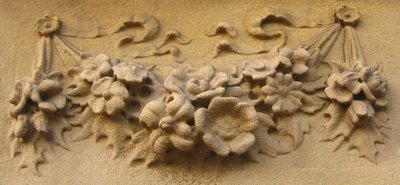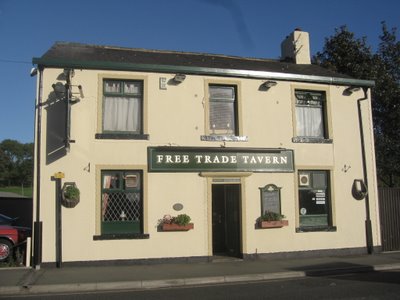
Hygrocybe Sp ?
 Coprinus atramentarius (Bull.: Fr.) one of the Ink cap fungi growing in Rochdale cemetery today. (Polish czernidłak pospolity)
Coprinus atramentarius (Bull.: Fr.) one of the Ink cap fungi growing in Rochdale cemetery today. (Polish czernidłak pospolity) Although edible it is not advisable to eat it. The mushrooms contain coprine, a toxin similar to disulfiram, [bis(diethylthiocarbonyl)disulfide] the ingredient in the drug Antabuse, given to alcoholics. Coprine is unusual amino acid, a derivative of glutamic acid, which converts to cyclopropanone hydrate in the human body. Like Antabuse, the Ink Cap produces no ill effects -- unless one consumes alcohol, which will trigger nausea, vomiting, rash, dizziness, and so on.
Although edible it is not advisable to eat it. The mushrooms contain coprine, a toxin similar to disulfiram, [bis(diethylthiocarbonyl)disulfide] the ingredient in the drug Antabuse, given to alcoholics. Coprine is unusual amino acid, a derivative of glutamic acid, which converts to cyclopropanone hydrate in the human body. Like Antabuse, the Ink Cap produces no ill effects -- unless one consumes alcohol, which will trigger nausea, vomiting, rash, dizziness, and so on. A great deal of information / photographs to help identification / sightings / records are available at Rochdale Field Naturalists website.
A great deal of information / photographs to help identification / sightings / records are available at Rochdale Field Naturalists website. This is one of the 2 Gate Houses of Rochdale Cemetery which has been greatly neglected.
This is one of the 2 Gate Houses of Rochdale Cemetery which has been greatly neglected.

 Falinge park (13 acres)given to Rochdale by Alderman Samuel Turner (Mayor 1901-3) in commemeoration of the Coronation of King Edward VII on 5th August 1905.
Falinge park (13 acres)given to Rochdale by Alderman Samuel Turner (Mayor 1901-3) in commemeoration of the Coronation of King Edward VII on 5th August 1905. Mount Falinge (only the windoless facade exists today, heavily fenced off and neglected) was built by Clement Royds, his son Albert Hudson Royds, was the grandfather of Alderman Turner.
Mount Falinge (only the windoless facade exists today, heavily fenced off and neglected) was built by Clement Royds, his son Albert Hudson Royds, was the grandfather of Alderman Turner.
 In the middle of the 19th Century a series of Boundary Stones were erected 1 mile from the centre (?) of Rochdale.
In the middle of the 19th Century a series of Boundary Stones were erected 1 mile from the centre (?) of Rochdale.
 The Post Office on the Esplanade in the centre of Rochdale was built in 1927 by the famous firm of R & T Howarth, who built many familiar buildings in Rochdale.
The Post Office on the Esplanade in the centre of Rochdale was built in 1927 by the famous firm of R & T Howarth, who built many familiar buildings in Rochdale. The Free Trade Tavern...where else is there a pub named after a Political Idea ? The Ramada Inn where our Dear Leader laid his head last week at the Labour Party Conference used to be the Free Trade Hall but that (on the site of Peterloo) is an unhealthy reference to our socialist past.
The Free Trade Tavern...where else is there a pub named after a Political Idea ? The Ramada Inn where our Dear Leader laid his head last week at the Labour Party Conference used to be the Free Trade Hall but that (on the site of Peterloo) is an unhealthy reference to our socialist past. Rochdale born John Milne (1850 – 1913) after training as a geologist, he emigrated to Japan and to take up the post of Professor of mining and geology at the Imperial College of Engineering in Tokyo.
Rochdale born John Milne (1850 – 1913) after training as a geologist, he emigrated to Japan and to take up the post of Professor of mining and geology at the Imperial College of Engineering in Tokyo.